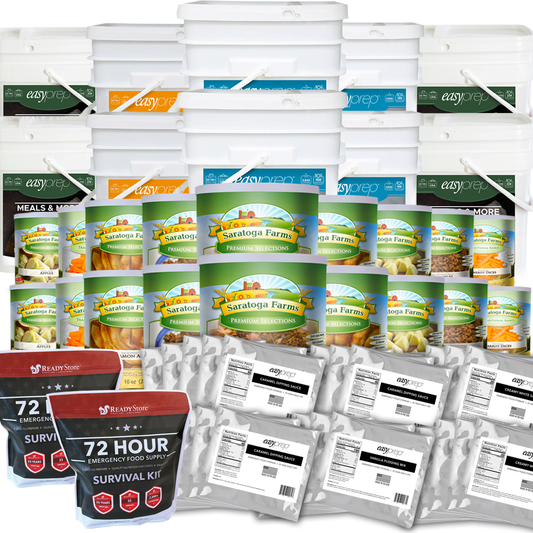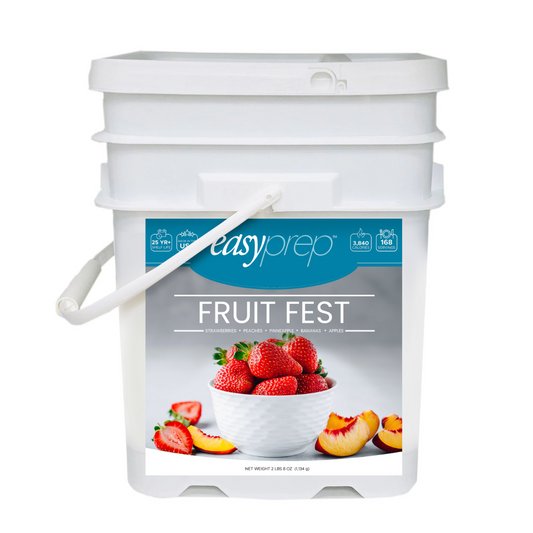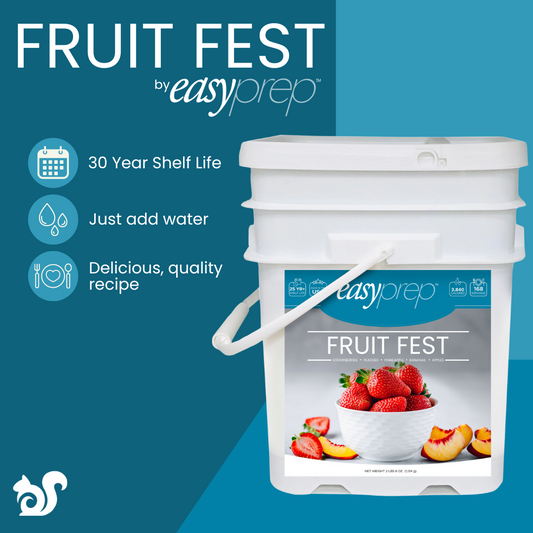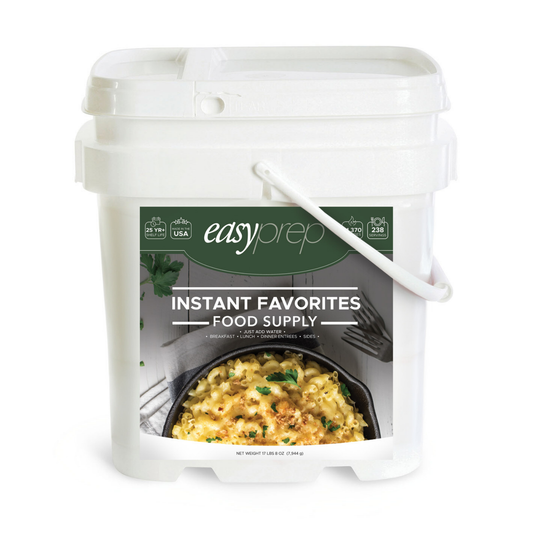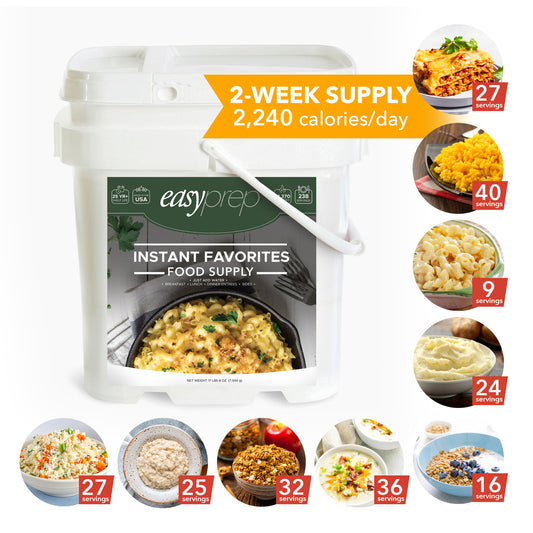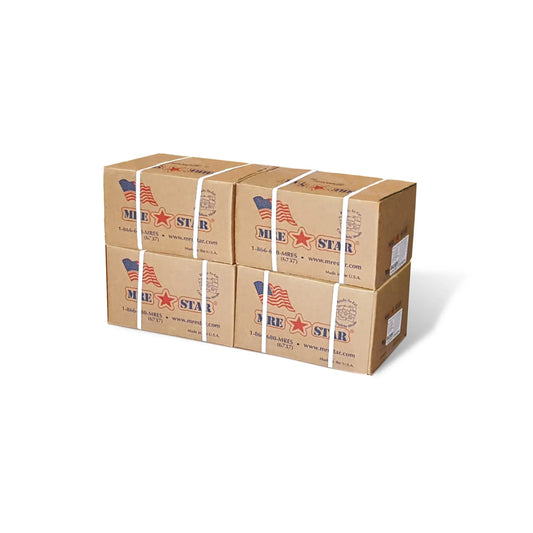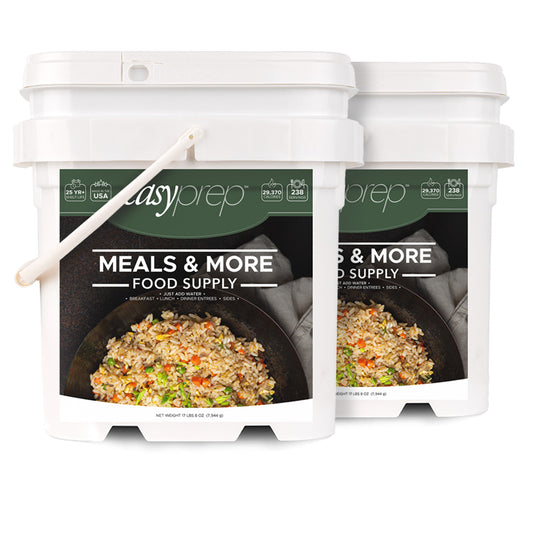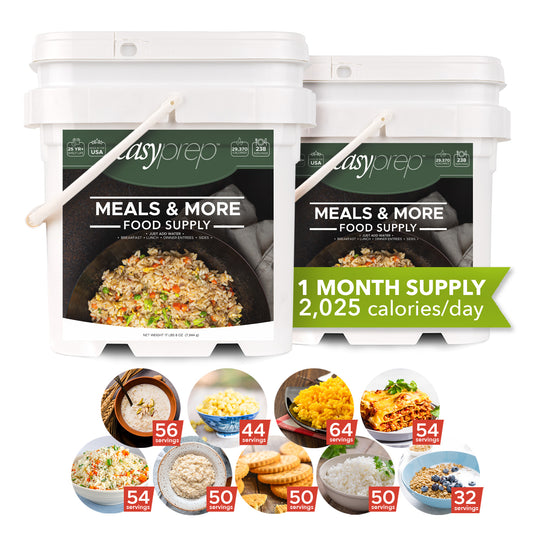The Science Behind Honey's Long Shelf-Life
17 Sep 2013
In 2003, Georgian construction workers were building an oil pipeline from the Caspian Sea to the Mediterranean. While they were hard at work, they came across something very peculiar - an ancient burial ground.
 After calling archaeologists from Georgia, Turkey, Britain and America, it was discovered that the pots that lay around the burial ground had been full of honey! The bees who created this honey had flown around Georgia 5,500 years ago1.
This isn't the only time that honey has been found in ancient burial spots. In fact, archaeologists have found pots of honey in Egyptian Pharaoh Tutankhamen's tomb2 that was still edible!
So, how is this possible? How is something that's been sitting on the shelf for thousands of years still edible but with all of our know-how and science, we can't get a Twinkie to have a shelf life past a few months?
The answer is actually a little more complicated than I had originally thought. There are a few factors including chemicals, the structure of honey and the bees themselves.
Chemical Composition of Honey
"Honey, in its natural form, is very low moisture," said Amina Harris, executive director of the Honey and Pollination Center at the Robert Mondavis Institute at University of California. "Very few bacteria or microorganisms can survive in an environment like that, they just die. They’re smothered by it, essentially." Honey is hygroscopic, meaning that it has very little water in its natural state. This contributes to honey's longevity. Because of the low water levels, organisms don't survive long enough within the jar to spoil.
Honey is also very acidic. In fact, it has a pH level that falls between 3.0 and 4.5. That type of pH level would kill of anything that tried to live in that environment.
You might be saying to yourself, "Honey can't be the only food that is highly acidic and hygroscopic." And you're right! For example, molasses is highly acidic and has a pH level of 5.5. And even with these attributes, it will spoil over time3. So, what's the difference?
The Bees
That's where the honey bee comes in! Nectar, the first material collected by bees to create honey, is very high in water - anywhere from 60-80 percent. But through the honey making process, bees remove a lot of the moisture from the nectar by flapping their wings. The bees also stomach the nectar, combining it with enzymes in their stomach called glucose oxidase. When the bees regurgitate the nectar and comb it into honey, this enzyme mixes with the nectar and breaks it down into two parts - gluconic acid and hydrogen peroxide. Hydrogen peroxide also contributes to the shelf-life because it prevents other mad things from growing in the honey.
As a side note, this hydrogen peroxide is one reason that honey was used as a medicinal remedy in the past. It creates a thick, perfect barrier against infection in wounds4. Honey also sucks in a ton of moisture.
Sealed Container
And that moisture absorption leads to the last factor that contributes to honey's eternal shelf life is the container.
"As long as the lid stays on it and no water is added to it, honey will not go bad," Harris explains. "As soon as you add water to it, it may go bad. Or if you open the lid, it may get more water in it and it may go bad."
So, if you want to keep your honey for as long as possible, keep it sealed! But with it's natural sweetness and medicinal properties, it'll be hard to keep it on the shelf for that long!
1. Lomsadze, Giorgi. March 30, 2012. "Report: Georgia Unearths the World's Oldest Honey." Eurasianet.org Accessed August 26, 2013 at www.eurasianet.org/node/65204
2. Buchmann, Stephen L. 2006 "Letters from the Hive: An Intimate History of Bees, Honey and Humankind." Random House LLC. Pp 122.
3. "Kitchen Chart" 2013. Martha Stewart Website. Accessed Sept 16, 2013 at www.marthastewart.com/267593/kitchen-chart.
4. "Chepulis, Lynne. 2008. "Healing Honey: A Natural Remedy for Better Health and Wellness." Universal-Publishers. Pp. 30
After calling archaeologists from Georgia, Turkey, Britain and America, it was discovered that the pots that lay around the burial ground had been full of honey! The bees who created this honey had flown around Georgia 5,500 years ago1.
This isn't the only time that honey has been found in ancient burial spots. In fact, archaeologists have found pots of honey in Egyptian Pharaoh Tutankhamen's tomb2 that was still edible!
So, how is this possible? How is something that's been sitting on the shelf for thousands of years still edible but with all of our know-how and science, we can't get a Twinkie to have a shelf life past a few months?
The answer is actually a little more complicated than I had originally thought. There are a few factors including chemicals, the structure of honey and the bees themselves.
Chemical Composition of Honey
"Honey, in its natural form, is very low moisture," said Amina Harris, executive director of the Honey and Pollination Center at the Robert Mondavis Institute at University of California. "Very few bacteria or microorganisms can survive in an environment like that, they just die. They’re smothered by it, essentially." Honey is hygroscopic, meaning that it has very little water in its natural state. This contributes to honey's longevity. Because of the low water levels, organisms don't survive long enough within the jar to spoil.
Honey is also very acidic. In fact, it has a pH level that falls between 3.0 and 4.5. That type of pH level would kill of anything that tried to live in that environment.
You might be saying to yourself, "Honey can't be the only food that is highly acidic and hygroscopic." And you're right! For example, molasses is highly acidic and has a pH level of 5.5. And even with these attributes, it will spoil over time3. So, what's the difference?
The Bees
That's where the honey bee comes in! Nectar, the first material collected by bees to create honey, is very high in water - anywhere from 60-80 percent. But through the honey making process, bees remove a lot of the moisture from the nectar by flapping their wings. The bees also stomach the nectar, combining it with enzymes in their stomach called glucose oxidase. When the bees regurgitate the nectar and comb it into honey, this enzyme mixes with the nectar and breaks it down into two parts - gluconic acid and hydrogen peroxide. Hydrogen peroxide also contributes to the shelf-life because it prevents other mad things from growing in the honey.
As a side note, this hydrogen peroxide is one reason that honey was used as a medicinal remedy in the past. It creates a thick, perfect barrier against infection in wounds4. Honey also sucks in a ton of moisture.
Sealed Container
And that moisture absorption leads to the last factor that contributes to honey's eternal shelf life is the container.
"As long as the lid stays on it and no water is added to it, honey will not go bad," Harris explains. "As soon as you add water to it, it may go bad. Or if you open the lid, it may get more water in it and it may go bad."
So, if you want to keep your honey for as long as possible, keep it sealed! But with it's natural sweetness and medicinal properties, it'll be hard to keep it on the shelf for that long!
1. Lomsadze, Giorgi. March 30, 2012. "Report: Georgia Unearths the World's Oldest Honey." Eurasianet.org Accessed August 26, 2013 at www.eurasianet.org/node/65204
2. Buchmann, Stephen L. 2006 "Letters from the Hive: An Intimate History of Bees, Honey and Humankind." Random House LLC. Pp 122.
3. "Kitchen Chart" 2013. Martha Stewart Website. Accessed Sept 16, 2013 at www.marthastewart.com/267593/kitchen-chart.
4. "Chepulis, Lynne. 2008. "Healing Honey: A Natural Remedy for Better Health and Wellness." Universal-Publishers. Pp. 30

 After calling archaeologists from Georgia, Turkey, Britain and America, it was discovered that the pots that lay around the burial ground had been full of honey! The bees who created this honey had flown around Georgia 5,500 years ago1.
This isn't the only time that honey has been found in ancient burial spots. In fact, archaeologists have found pots of honey in Egyptian Pharaoh Tutankhamen's tomb2 that was still edible!
So, how is this possible? How is something that's been sitting on the shelf for thousands of years still edible but with all of our know-how and science, we can't get a Twinkie to have a shelf life past a few months?
The answer is actually a little more complicated than I had originally thought. There are a few factors including chemicals, the structure of honey and the bees themselves.
Chemical Composition of Honey
"Honey, in its natural form, is very low moisture," said Amina Harris, executive director of the Honey and Pollination Center at the Robert Mondavis Institute at University of California. "Very few bacteria or microorganisms can survive in an environment like that, they just die. They’re smothered by it, essentially." Honey is hygroscopic, meaning that it has very little water in its natural state. This contributes to honey's longevity. Because of the low water levels, organisms don't survive long enough within the jar to spoil.
Honey is also very acidic. In fact, it has a pH level that falls between 3.0 and 4.5. That type of pH level would kill of anything that tried to live in that environment.
You might be saying to yourself, "Honey can't be the only food that is highly acidic and hygroscopic." And you're right! For example, molasses is highly acidic and has a pH level of 5.5. And even with these attributes, it will spoil over time3. So, what's the difference?
The Bees
That's where the honey bee comes in! Nectar, the first material collected by bees to create honey, is very high in water - anywhere from 60-80 percent. But through the honey making process, bees remove a lot of the moisture from the nectar by flapping their wings. The bees also stomach the nectar, combining it with enzymes in their stomach called glucose oxidase. When the bees regurgitate the nectar and comb it into honey, this enzyme mixes with the nectar and breaks it down into two parts - gluconic acid and hydrogen peroxide. Hydrogen peroxide also contributes to the shelf-life because it prevents other mad things from growing in the honey.
As a side note, this hydrogen peroxide is one reason that honey was used as a medicinal remedy in the past. It creates a thick, perfect barrier against infection in wounds4. Honey also sucks in a ton of moisture.
Sealed Container
And that moisture absorption leads to the last factor that contributes to honey's eternal shelf life is the container.
"As long as the lid stays on it and no water is added to it, honey will not go bad," Harris explains. "As soon as you add water to it, it may go bad. Or if you open the lid, it may get more water in it and it may go bad."
So, if you want to keep your honey for as long as possible, keep it sealed! But with it's natural sweetness and medicinal properties, it'll be hard to keep it on the shelf for that long!
1. Lomsadze, Giorgi. March 30, 2012. "Report: Georgia Unearths the World's Oldest Honey." Eurasianet.org Accessed August 26, 2013 at www.eurasianet.org/node/65204
2. Buchmann, Stephen L. 2006 "Letters from the Hive: An Intimate History of Bees, Honey and Humankind." Random House LLC. Pp 122.
3. "Kitchen Chart" 2013. Martha Stewart Website. Accessed Sept 16, 2013 at www.marthastewart.com/267593/kitchen-chart.
4. "Chepulis, Lynne. 2008. "Healing Honey: A Natural Remedy for Better Health and Wellness." Universal-Publishers. Pp. 30
After calling archaeologists from Georgia, Turkey, Britain and America, it was discovered that the pots that lay around the burial ground had been full of honey! The bees who created this honey had flown around Georgia 5,500 years ago1.
This isn't the only time that honey has been found in ancient burial spots. In fact, archaeologists have found pots of honey in Egyptian Pharaoh Tutankhamen's tomb2 that was still edible!
So, how is this possible? How is something that's been sitting on the shelf for thousands of years still edible but with all of our know-how and science, we can't get a Twinkie to have a shelf life past a few months?
The answer is actually a little more complicated than I had originally thought. There are a few factors including chemicals, the structure of honey and the bees themselves.
Chemical Composition of Honey
"Honey, in its natural form, is very low moisture," said Amina Harris, executive director of the Honey and Pollination Center at the Robert Mondavis Institute at University of California. "Very few bacteria or microorganisms can survive in an environment like that, they just die. They’re smothered by it, essentially." Honey is hygroscopic, meaning that it has very little water in its natural state. This contributes to honey's longevity. Because of the low water levels, organisms don't survive long enough within the jar to spoil.
Honey is also very acidic. In fact, it has a pH level that falls between 3.0 and 4.5. That type of pH level would kill of anything that tried to live in that environment.
You might be saying to yourself, "Honey can't be the only food that is highly acidic and hygroscopic." And you're right! For example, molasses is highly acidic and has a pH level of 5.5. And even with these attributes, it will spoil over time3. So, what's the difference?
The Bees
That's where the honey bee comes in! Nectar, the first material collected by bees to create honey, is very high in water - anywhere from 60-80 percent. But through the honey making process, bees remove a lot of the moisture from the nectar by flapping their wings. The bees also stomach the nectar, combining it with enzymes in their stomach called glucose oxidase. When the bees regurgitate the nectar and comb it into honey, this enzyme mixes with the nectar and breaks it down into two parts - gluconic acid and hydrogen peroxide. Hydrogen peroxide also contributes to the shelf-life because it prevents other mad things from growing in the honey.
As a side note, this hydrogen peroxide is one reason that honey was used as a medicinal remedy in the past. It creates a thick, perfect barrier against infection in wounds4. Honey also sucks in a ton of moisture.
Sealed Container
And that moisture absorption leads to the last factor that contributes to honey's eternal shelf life is the container.
"As long as the lid stays on it and no water is added to it, honey will not go bad," Harris explains. "As soon as you add water to it, it may go bad. Or if you open the lid, it may get more water in it and it may go bad."
So, if you want to keep your honey for as long as possible, keep it sealed! But with it's natural sweetness and medicinal properties, it'll be hard to keep it on the shelf for that long!
1. Lomsadze, Giorgi. March 30, 2012. "Report: Georgia Unearths the World's Oldest Honey." Eurasianet.org Accessed August 26, 2013 at www.eurasianet.org/node/65204
2. Buchmann, Stephen L. 2006 "Letters from the Hive: An Intimate History of Bees, Honey and Humankind." Random House LLC. Pp 122.
3. "Kitchen Chart" 2013. Martha Stewart Website. Accessed Sept 16, 2013 at www.marthastewart.com/267593/kitchen-chart.
4. "Chepulis, Lynne. 2008. "Healing Honey: A Natural Remedy for Better Health and Wellness." Universal-Publishers. Pp. 30



